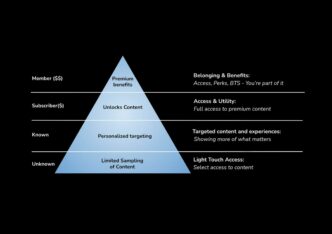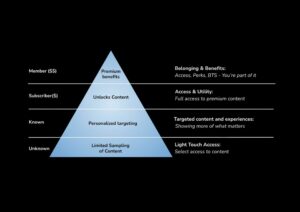

Perrine Pavageau worked for 4 years as Program Manager in the Marketing Department of The New York Times. Her main mission was to set up operational mechanisms to ensure the success of subscriber acquisition strategies. This article is an introduction to Perrine's role, the first in a series of articles in which she shares behind-the-scenes details of 5 projects she carried out in this role.
I’m going to tell you about a little-known role I had at The New York Times, that of “Program Manager”. A role in the marketing team at the intersection of strategic vision and execution.
My main objective in this role was to put operational mechanisms in place to ensure the success of marketing strategies.
Before this role, I was Project Manager for acquisition campaigns, coordinating their execution, from marketing brief to final delivery. So, Program Manager, what’s the difference?
Program Management can be identified with the function of a PMO (Project Management Officer), more commonly seen in Product or Tech Departments. A PMO provides teams with the methods and tools to enable them to achieve their objectives. A PMO can also manage their own projects, whose actors often have very different objectives. For me, the key words in Program Management are align, facilitate, organize, rationalize and communicate.
Needs that speak to you, in a context where needs are increasingly transversal, objectives increasingly ambitious, and teams are distanced by remote work?
This role was created in a context of reorganization, with the creation of an internal media planning department, then the setting up of squads and a “Marketing Operations” entity. I reported to the SVP, Subscription Acquisition & Media, and then to the Executive Director, Marketing Operations.
The reorganization into squads was based on a principle of “missions” and “functions”:
Mission = equivalent to “squad”; cross-functional team composed of Marketing, Product and Tech experts, whose work was focused on a specific target, objective or product.
Function = hierarchical attachment. For example, a project manager could be part of the “Growth” mission, but their function lived within the “Marketing Operations” team. A media planner could be part of the “Customer Experience” mission, but their function would live within the Marketing & Media Strategy team.
The role of the Program Management function then became clear. A function that answers the question “how do we do it?” in such a context. A contact person to whom teams could turn to express their operational challenges. In a series of articles to come, I will tell you about concrete projects that I have carried out in this role.
Humanly, this role is exciting, but challenging. As a former project manager, this new role allowed me to work with a much wider range of people within the company, to learn about different jobs and to gain more exposure to management. On the other hand, I had to know how to navigate between different teams, listen to others, learn from them and get out of my comfort zone. A real satisfaction: succeeding in getting teams that previously worked in silos to work together. The hardest part was imposing certain tasks or methods on teams that did not report to me hierarchically.
The Program Management function at The New York Times still exists. It has been renamed “Strategic Programs and Operations”, which demonstrates its impact at the strategic level and not just at the operational level. The team consists of four Program Managers, each specializing in a particular expertise and business line, all of whom have an impact on achieving the ambitious goal of reaching 15 million subscribers by 2027.
The Audiencers’ newsletter: from professionals to professionals
Sign up to our newsletter – real-life examples, expert points of view and inspirations from publishers around the world to help you do your job better. Sent every two weeks.












